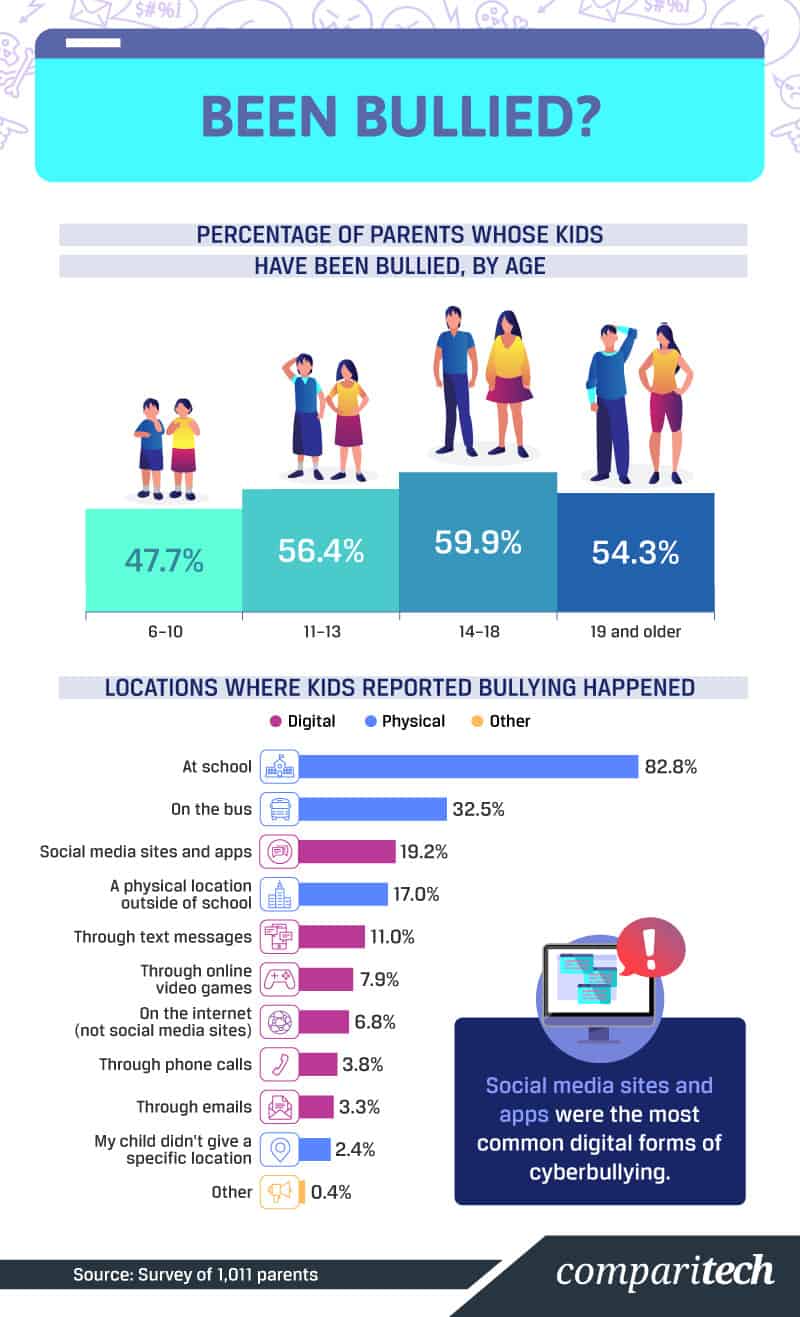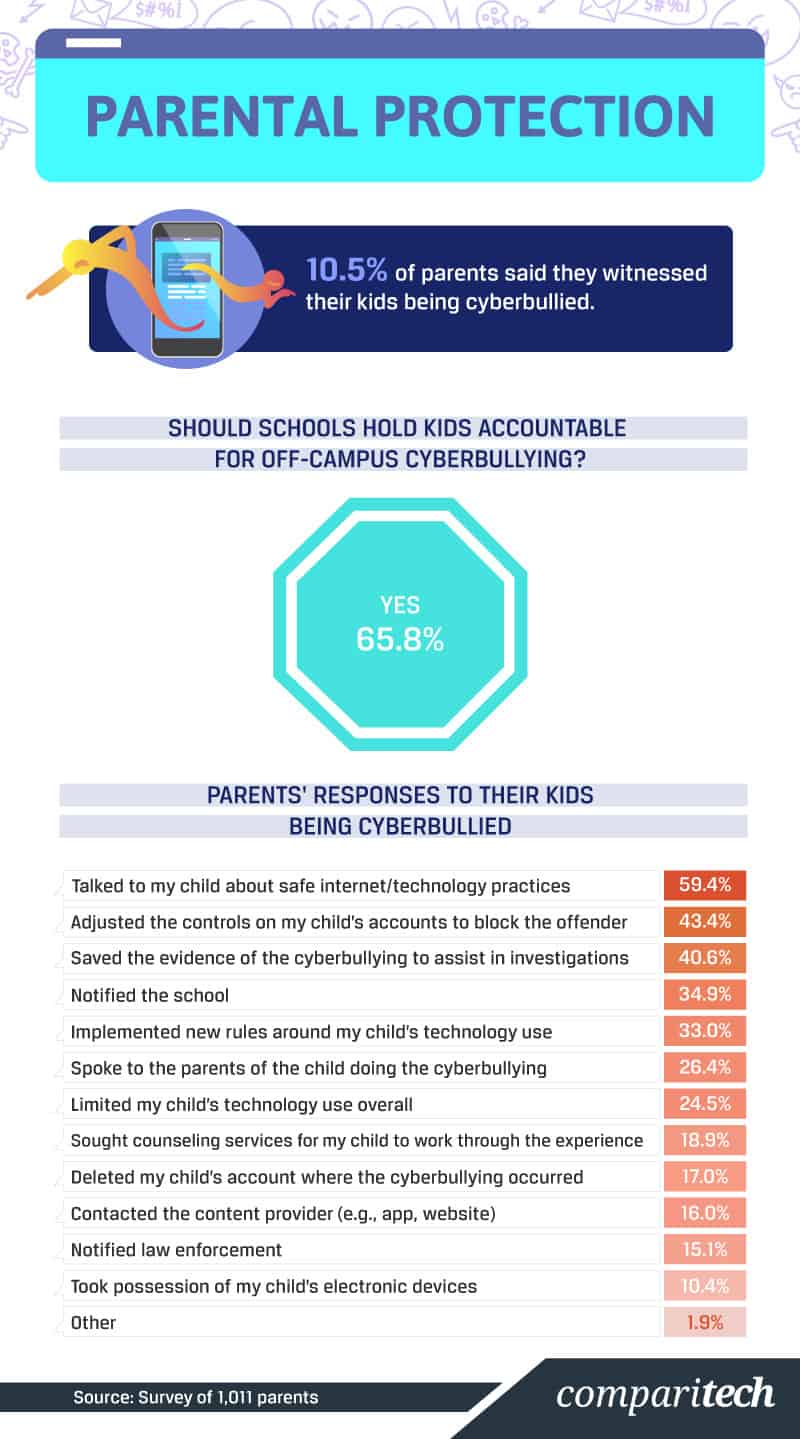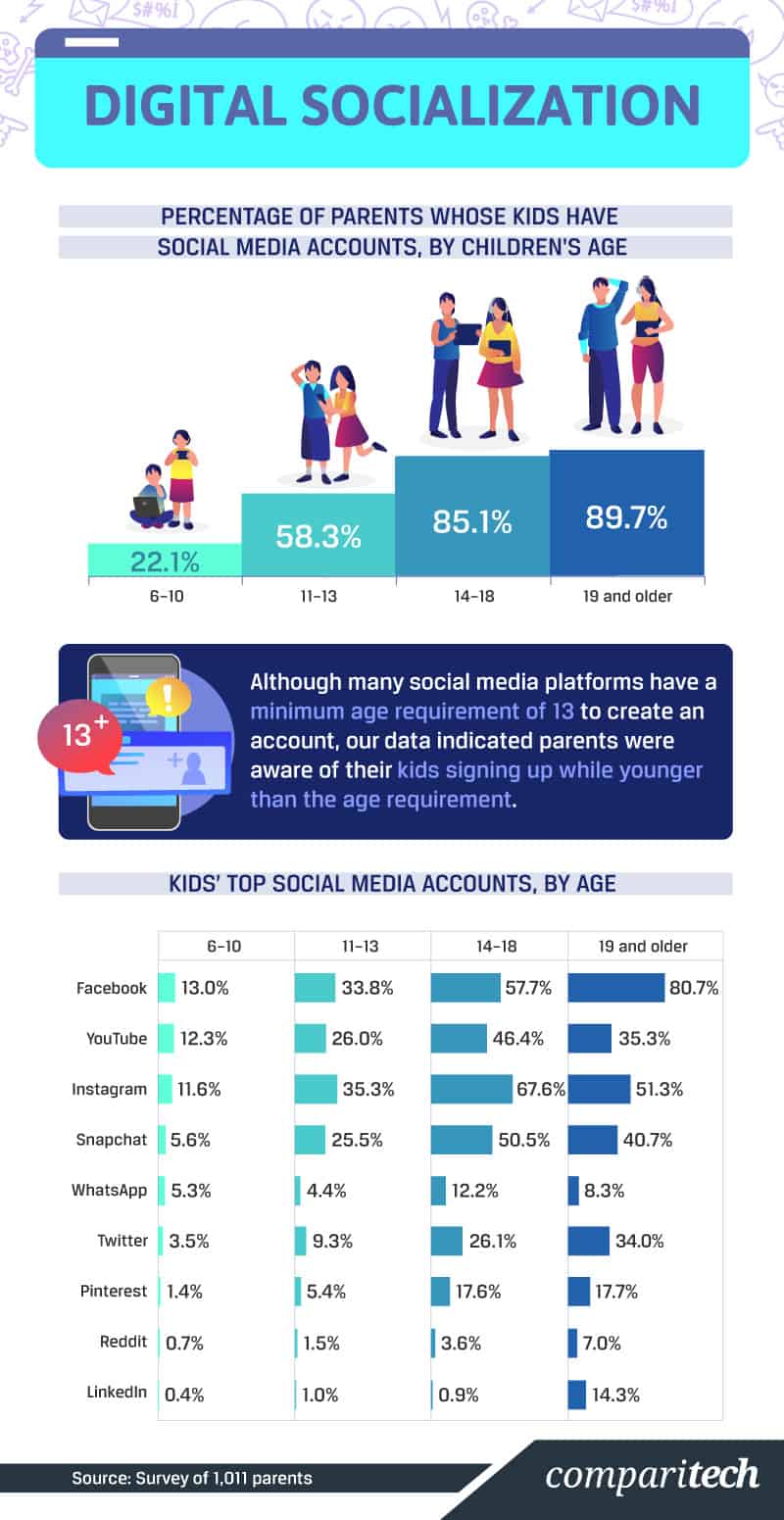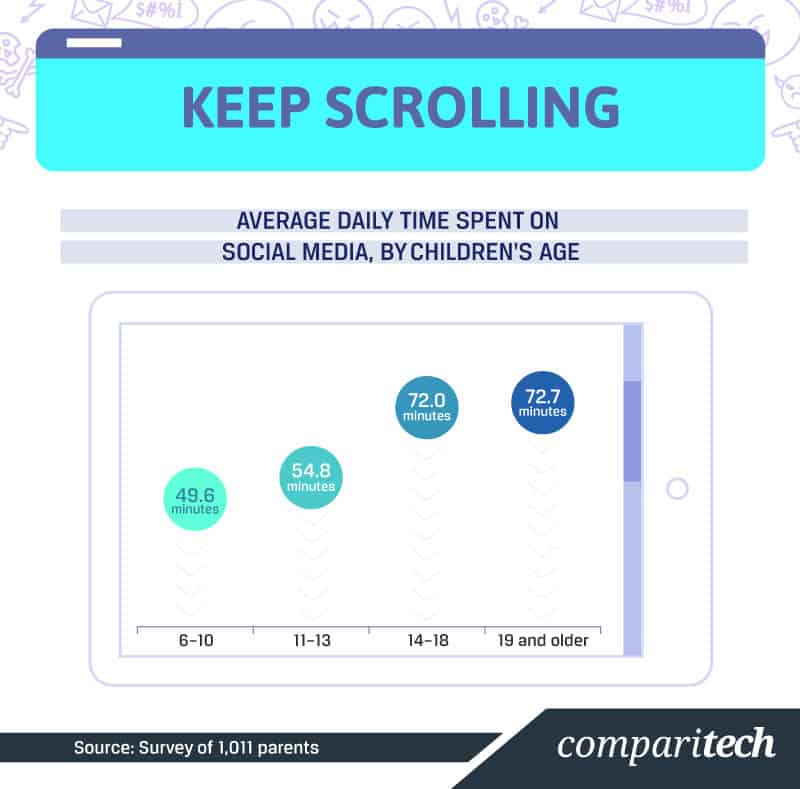In January 2018, media outlets reported on a 14-year-old Australian girl named Amy “Dolly” Everett. She died from suicide after facing cyberbullying.
Dolly’s story is tragic, and sadly not uncommon. Across the globe, individuals under the age of 25 who have been the victim of cyberbullying have 2.3 times more risk of self-harm or suicidal behavior, according to a report in the Journal of Medical Internet Research.
The dangers of cyberbullying aren’t limited to just one gender, age group, or digital or social media platform. Cyberbullying transcends demographics and geography. Any one of us can be a victim. Such online attacks have devastating effects on the mental, emotional, and physical health of people of all ages and backgrounds.
Putting an end to cyberbullying isn’t as easy as unplugging from an internet connection. Parents often don’t have the time or ability to monitor every online interaction their children have. Moreover, it can be difficult to tell whether someone has been cyberbullied, or just how much harm the cyberbullying has caused. Society realizes the harm of physical bullying and works to prevent it, but the concept of cyberbullying is still not fully understood or taken as seriously as it must be.
The devastating effects of cyberbullying on internet users can be prevented only by comprehending and appreciating key cyberbullying facts, and by investigating effective ways to address and counter the offense.
What Is Cyberbullying?
There have been several definitions of cyberbullying as the digital age continues to grow and morph. This has led to a debate among researchers about how cyberbullying differs from physical bullying. A report in the medical journal Pediatrics notes that definitions of cyberbullying have evolved from simply using digital technology to harm or bully, to causing more consistent and willful harm through computers, phones, and other electronic devices.
Distinguishing cyberbullying from physical bullying can sometimes be difficult. If a student instigates repeated physical altercations with another student or sends several intentional, hurtful messages to that same student, this could be considered an example of both traditional bullying and cyberbullying.
As we better understand cyberbullying facts, we see that cyberbullying differs from traditional bullying because the digital technology used to conduct the offense acts as a buffer between the perpetrator and the victim.
Online cyberbullying can happen anonymously, such as when someone creates an anonymous Snapchat account to send hurtful messages or write posts that ridicule the victim. In such cases, there is no specific “bully” who is immediately identifiable. The bully may, in fact, consist of more than one individual using multiple, potentially anonymous digital accounts and platforms.
In addition to being potentially anonymous, cyberbullying can be maddeningly persistent. While victims of cyberbullying have the ability to block or report their harassers to the major online platforms, the bullies could create new accounts to continue their harassment.
Targets of cyberbullying often retreat entirely from using some or all digital platforms. Considering how integrated social and digital media have become in daily life, the sad cyberbullying fact is that simply abandoning these digital tools is impractical. Doing so has the effect of isolating the individual and placing them at a disadvantage in their work, school, and social life. Additionally, with social media now commonplace in collegiate and professional settings — and frequently the main communication tool between people who are separated by location and geography — dropping social media completely can negatively impact personal and professional relationships.
Cyberbullying doesn’t happen to only students or individuals under 25 years of age. Parents, professionals, the elderly, and others can be victims of cyberbullying. Individuals they know, such as coworkers, may target them through digital platforms. They may be bullied by individuals they’ve communicated with on websites and social media platforms but have never met in person, being repeatedly harassed by anonymous users on Twitter or Reddit, for example.
A surprising fact about cyberbullying is that many of the bullies don’t realize their actions constitute harassment. Posting a joke or comment on someone’s Facebook account or repeatedly messaging certain individuals online can negatively impact that person, even if the messenger’s intentions are innocuous. It’s easier to see the harm of physical bullying in real life, but the actual harm that cyberbullying causes is not always readily apparent to the perpetrator or to people other than the victim.
Facts and Statistics Regarding Cyberbullying
A fact about cyberbullying is that any person with access to the internet or a digital device can be hurt by the practice or be a perpetrator. Because cyberbullying can happen on such a wide scale and is so difficult to pinpoint, the damage it causes can easily be misconstrued or underestimated. Here are some important cyberbullying facts and statistics to give a clearer picture of the harm it can cause:
More than one-third of 11- to 17-year-olds say they have been bullied online, according to a 2014 survey from internet security firm McAfee, as reported by The Guardian. While 77% of parents have talked to their children about online safety, more than one-third of children polled say they spend up to 10 hours each day on Snapchat, a private messaging app noted for sometimes containing explicit photographs.
More than 15% of U.S. high school students report being cyberbullied, according to a survey by the U.S. Centers for Disease Control (CDC). While 20% of high school students report being bullied on campus, the 15% who reported being cyberbullied show that it can happen to students of all ages, and regardless of their location.
Young people who experienced cyber victimization were more than two times as likely to attempt suicide,according to a report from the Journal of Medical Internet Research. Additionally, the report states that the perpetrators of cyberbullying were more likely to demonstrate suicidal behaviors than those who did not engage in cyberbullying.
More than half of LGBTQ students experience cyberbullying, according to StopBullying.gov, a site managed by the U.S. Department of Health and Human Services (HHS). Additionally, LGBTQ youth — because of societal and other pressures — are already at increased risk for suicide even when they haven’t reported or experienced bullying. However, the site notes that the relationship between LGBTQ youth, suicide, and bullying should not be oversimplified.
Instagram is the most commonly used digital platform for cyberbullying, according to a BBC News report. In that same report, 70% of young individuals note they had acted abusively toward another person online, and one in three young people live in fear of cyberbullying.
Forty-four percent of men and 37% of women have experienced some type of online harassment, according to the Pew Research Center. Women are more likely to report being stalked or sexually harassed online, while men are more likely to receive physical threats, name-calling, or messages that cause embarrassment.
More than half of minority youth have witnessed people demeaning an ethnic group online or making false or joking statements about those ethnic groups, according to a survey from the American Psychological Association. Additionally, more than 30% of minority youth have had rude things said to them or about them because of their ethnicity.
Ways to Counter and Prevent Cyberbullying
Cyberbullying is facilitated by easy access to digital media platforms and devices. Often, these are used without any oversight. This makes cyberbullying an incredibly difficult problem to tackle. Preventing the practice would require an intense amount of time to effectively monitor every online interaction. While it is often not feasible for people to completely rid themselves of digital tools, there are methods that parents, children, and educators can employ to combat the phenomenon and reduce its harmful effects.
For parents, an effective way to address the harm of cyberbullying is simply by talking with their children about the issue. Australia’s National Centre Against Bullying suggests that parents explain to their children that it’s not a good idea to retaliate against cyberbullying. Rather, it is important to collect evidence of the offending behavior. This can be accomplished through such methods as capturing screenshots, messages, photos, and other bullying content.
Additionally, parents can talk to their children about their online activities to discover whether cyberbullying is happening to their peers. It is also important to discuss online safety, privacy, and password management. Set guidelines on how children are to conduct themselves online and instruct children to be open with their parents about any harm they have felt from bullying online or in the real world.
Children can help prevent being a victim of cyberbullying by being cautious about what they post. They should avoid sharing their passwords, and ensure their online privacy settings are keeping them safe. According to StopBullying.gov, children should also keep their parents informed about their online activities and any new connections they’ve made. Children play an important role in the prevention of cyberbullying. If children who know the cyberbullying facts notice it happening to someone else, they can notify a trustworthy adult. They should also be kind, generous, and supportive to the child who is being bullied.
Teachers, educators, and other trusted adults must join with parents and children to combat cyberbullying. Often these individuals can spot changes in a child’s behavior and can help address the issue before parents can. StopBullying.gov suggests that these adults speak privately to the child if they suspect cyberbullying has occurred, and potentially serve as a facilitator between parents and other school officials. These individuals can also encourage children to be more empathetic and develop stronger emotional intelligence to help discourage cyberbullying in the first place.
Adults, whether they are victims of cyberbullying or perpetrators against other adults, can help end this phenomenon. They can be more conscious of their online behaviors and take the time to reflect on the impact of their social media posting. If a co-worker wouldn’t be comfortable sharing face-to-face what they write to a colleague online, then it’s probably not a good idea to send that digital message.
Adults who have been cyberbullied should compile detailed evidence of the act and alert whoever may be able to take action to end the situation. This may be a supervisor, HR representative, a local government authority, or someone else. Just as with children, adults should be cautious about what they share online and who they share with. Adjust all privacy and password settings to make sure the sensitive information in digital accounts is accessible only by people they trust.
Cyberbullying is not an issue that can be solved easily or overnight. The problem will become more complex as online communication and digital platforms become increasingly intertwined with our day-to-day lives. By understanding cyberbullying facts and being aware of methods to address it, children, adults, and educators can help create a better, more empathetic digital world.
Almost 60 percent of parents with children aged 14 to 18 reported them being bullied
So how many kids are experiencing cyberbullying and how do their parents feel about it? To get a better idea of technology’s role in bullying, we surveyed more than 1,000 parents of children over the age of five and asked about their children’s cyberbullying experiences. Continue reading to see what we learned.
History of Harassment
High school students were bullied the most of any age group, according to their parents. Almost 60 percent of parents with children aged 14 to 18 reported them being bullied, but middle school-age children weren’t far behind. Fifty-six percent of parents with children aged 11 to 13 also reported their kids experienced bullying.
Nearly 83 percent of parents said the bullying happened at school, and 32 percent said it happened on the bus. While the majority of bullying occurred in physical locations, bullying on digital platforms occurred in a wider variety of outlets. Nineteen percent of bullying was through social media, and 11 percent was through text messages.
Online video games, internet sites other than social media, phone calls, and emails were also susceptible to bullying. The scary part of the digital world is that a person doesn’t even need to have an account on social media to be a victim of cyberbullying. The spread of private information and harmful words on social media sites can be saved and spread in the “real world,” eventually making it back to the victims.
How Do Parents Help?
Cyberbullying can make it difficult for parents to intervene or protect their children from becoming digital victims.
Around 59 percent of parents who reported their children being cyberbullied decided to talk to them about how to safely navigate the digital world. Forty-three percent of parents also adjusted the controls on their children’s accounts and blocked the offender. As many social media platforms have received backlash for their failure to acton cyberbullying, it seems it is up to the parents to block or censor their kids’ feeds to minimize bullies’ ability to reach them.
Unfortunately, the issue of failure to intervene is also directed at schools. While schools have some authority over what occurs on school grounds, cyberbullying can take place anywhere and usually occurs off campus. Multiple states have laws allowing schools to punish students involved in cyberbullying, but free speech issues can make it difficult to hold students accountable for off-campus acts. The pushback doesn’t sit well with the majority of parents, though.
Almost 66 percent of parents thought schools should hold kids accountable for off-campus cyberbullying – and their desires are supported by research. Studies have shown that cyberbullying is usually not completely off campus, with social media and internet harassment often being an indicator of in-school bullying. Even if the school doesn’t do anything to intervene, 35 percent of parents said they notified the school about a cyberbullying incident.
Platform Perceptions
With social media playing such a large role in cyberbullying, which platforms put kids most at risk?
Parents were most concerned about Facebook: 51 percent thought the social media network posed the biggest cyberbullying threat. However, recent studies have shown Instagram is taking over in both the number of teen users and the risk of cyberbullying. Less than 13 percent of parents had concerns about Instagram, but a 2017 study by Ditch the Label found more than 2 in 5 people aged 12 to 20 experienced bullying on the platform.
The discrepancy between parental concerns and actual data may be due to parents’ increased presence on Facebook over Instagram. If parents aren’t actively using Instagram, they may be less likely to see the bullying or understand the increased risk.
Tech for Teens
Technology can be both helpful and harmful regarding children’s safety, and development. With numerous pros and cons, there doesn’t seem to be a magic answer for when children should be introduced to technological devices and how much time they should spend on them. However, when children get technology seems to depend on the type of technology.
Kids between the ages of six and 10 were more likely to have tablets compared to every other age group and significantly less likely to have smartphones.Smartphones jumped in popularity for kids aged 11 to 13, with 73 percent of parents reporting their middle school-age children having at least one device each.
While the average age at which kids got their first personal tech device was 9.8 years old, studies have shown cyberbullying is linked to the amount of time spent on social media rather than the age at which kids begin using technology. The more time children spend on social media, the higher their risk for cyberbullying. Parents reported their children spent an average of 1.8 hours a day on their personal devices. For the majority of children 18 and younger, parents had access to their devices. Ninety-six percent of parents with children aged six to 10 had access to their kids’ devices, a number that only dropped to over 82 percent for children aged 14 to 18. Significantly fewer parents with children aged 19 and older said they had access – almost a third, despite their kids being legal adults.
Having access to kids’ devices or limiting their screen time is less about overprotectiveness and more about helping children navigate the harm technology can bring. Even the leader of the technology world, Bill Gates, sets strict rules for his children regarding smartphone use, ultimately banning them until age 14.
Who’s on Which App?
Kids may be getting their own technology at a young age, but when are they creating their own social media accounts? According to parents, around 58 percent of children between the ages of 11 and 13 already had their own social media profiles.Surprisingly, so did 22 percent of kids aged 6 to 10. The top platforms for the youngest age group were Facebook and YouTube. The latter makes sense considering the increasing popularity of children’s video channels on YouTube.
However, a significant portion of parents with kids from all age groups reported their children had Instagram accounts. Remember, Instagram is now considered a playground for cyberbullying, and despite the minimum age requirement of 13 to create an account, over 11 percent of parents with children aged 6 to 10 reported their youngsters used the platform. Of course, every parent is different, and some children may be more prepared for the digital world than others, but here are some tips to consider before allowing your child onto social media.
Time Spent Scrolling
Looking at the amount of time kids spend on social media may not seem like a lot when broken down by day. Children aged 6 to 10 spent an average of 50 minutes a day on social media, while those aged 19 and older spent an average of 72.7 minutes online.
With most movies being over 70 minutes, the amount of time all age groups spend scrolling doesn’t seem like much. But when we take daily averages and extend them over a year, the numbers sound a lot more serious. Over a year, kids aged 6 to 10 spend an average of over 18,000 minutes on social media – that’s enough time to read the “Harry Potter” series nearly five times. Social media isn’t all bad, but limiting the amount of time kids spend on it each day can broaden their horizons to other activities and decrease their risk of being bullied.
Technology to Protect
Bullying is still ever-present on school grounds and is increasingly problematic online, especially on social media. Kids may get access to technology and sign up for social media at younger ages (sometimes even before the minimum age requirement), but our study revealed that parents are continuing to monitor their children’s use. From limiting their time to having access to their accounts, parents seem to be aware of the threats that technology and the internet possess and are working to protect their children as much as they can.
Parents shouldn’t depend on social media companies to step in and police themselves. As an alternative, parental monitoring software can help parents keep track of what their kids do on their phones and manage their activity accordingly. Some tools parental control tools may be included with your device, and a range of third-party vendors offer easy-to-use dashboards from which parents can filter content. Comparitech has detailed reviews and tutorials on the best parental control apps and software.
Sources
- https://www.usatoday.com/story/life/allthemoms/2018/09/24/one-out-three-students-were-bullied-us-school-last-year/1374631002/
- http://theconversation.com/childhood-bullying-can-cause-lifelong-psychological-damage-heres-how-to-spot-the-signs-and-move-on-100288
- https://www.stopbullying.gov/media/facts/index.html#suicide
- https://www.cnn.com/2018/06/22/health/social-media-for-kids-parent-curve/index.html
- https://www.forbes.com/sites/andrewrossow/2018/05/06/you-no-longer-need-to-be-on-social-media-to-be-a-victim-of-cyberbullying/#445f797730cd
- https://www.bbc.com/news/technology-43197937
- https://upfront.scholastic.com/issues/2017-18/100917/should-schools-punish-off-campus-cyberbullying.html#1140L
- https://www.justice.org/what-we-do/enhance-practice-law/publications/trial-magazine/cyberbullying-schoolhouse-courthouse
- https://www.theguardian.com/technology/2018/feb/16/parents-killed-it-facebook-losing-teenage-users
- https://www.webmd.com/parenting/news/20180710/more-social-media-time-raises–cyberbullying-risk
- https://www.businessinsider.com/how-bill-gates-limits-tech-use-for-his-kids-2018-1
- https://youtubermagazine.com/the-rise-of-youtube-kids-and-how-to-get-in-on-the-action-347ca4494993
- https://www.thesun.co.uk/tech/4136922/age-restrictions-facebook-snapchat-twitter-instagram/
- https://www.nytimes.com/2018/02/21/well/family/children-technology-instagram-youtube.html
- https://www.personalcreations.com/blog/how-long-does-it-take-to-read-popular-books
Methodology
We surveyed 1,011 people. To qualify for the survey, people had to report having at least one child over the age of 5. If they had more than one child, respondents were asked to answer the survey based on their experiences with their oldest child.
Respondents were 59.3 percent women and 40.7 percent men. The average age was 42.1 with a standard deviation of 11.
Parts of this project include calculated averages. These were computed to account for outliers. This was done by finding the initial average and the standard deviation. The standard deviation was multiplied by three and added to the initial average. Any data point above this sum was excluded from the calculation of the final average.
When asked which social media accounts their children had, respondents were given the choices that appear in the final visualization, as well as the options of Tumblr, “I don’t know what accounts my child has,” and “Other.” These were excluded from the final visual due to low sample sizes. In the visual about which social media platforms posed the biggest risk for cyberbullying, Reddit and “Other” were also choices given to respondents, but they were excluded from our final visualization of the data.
Limitations
Respondents answered the survey based on their experiences with their oldest children. It’s possible that respondents with multiple children had different or more acute experiences with their other children. Also, this survey is based on parents’ perspectives. Therefore, they may not have knowledge of all their children’s internet activities.
Fair Use Statement
Cyberbullying, like all bullying, is a serious issue that needs to be addressed by parents, kids, school administrators, and communities. Feel free to share this study and start a conversation about what is and isn’t acceptable when interacting through devices and on the internet. Any sharing should be done for noncommercial reuse.
Thank you Kiera Winter Comparitech - tech compared and reviewed for sending us this link
Kenniscentrum Pesten per doelgroep
Stichting Stop Pesten Nu vertrouwt volledig op vrijwillige donaties en de inzet van vrijwilligers om haar belangrijke werk mogelijk te maken. Wij ontvangen geen subsidies, waardoor wij volledig afhankelijk zijn van de steun van mensen zoals u.
Tip van de redactie! Heb je haast? Navigeer dan snel naar:

► Scholen & Professionals Kenniscentrum Pesten in het Onderwijs
- Of navigeer direct naar de informatie per functionaris: Schooldirectie & MT / Anti-pest coördinator / Leerkracht / Mentor / Ouderraad & MR
- Leerlingen & opvoeders: Kinderen & Jongeren (Leerlingen) / Ouders & Opvoeders
► Sportverenigingen Kenniscentrum Pesten in de Sport
- Of navigeer direct naar de informatie per functionaris: Bestuurders / Coaches, Trainers & Begeleiders / (Top)Sporters & Scheidsrechters
- Jonge leden & ouders Kinderen & Jongeren (Leerlingen) / Ouders & Opvoeders
► Werkgevers Kenniscentrum Pesten op het Werk
- Of navigeer direct naar de informatie per functionaris: Directie en bestuurders / HRM / MT en Leidinggevenden / Medewerkers / Ondernemersraden / Vertrouwenspersonen
► Ouderen Kenniscentrum Pesten in Woonzorgcentra

Breng snel een bezoekje aan ...
► Kenniscentrum (Klassiek) Pesten
► Kenniscentrum Online pesten (cyberpesten)
► Kennisbank & Downloadcentrum o.a. Beleid & Factsheets / Handleidingen / Lesmaterialen / Posters / Wetenschappelijke Onderzoeken
► Ik word gepest, wat kan ik doen










